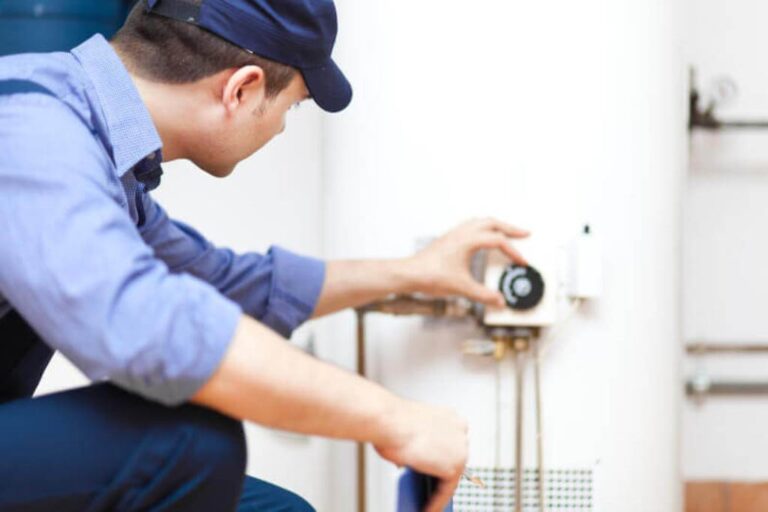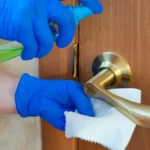Are you trying to figure out how to clean water heaters? If you’re unsure of the importance of regular water heater maintenance, click here!
Replacing the hot water heater in your home is going to cost you anywhere from a few hundred dollars to a few thousand dollars when it needs to be done.
With this in mind, you should make every effort to extend the life of your home’s hot water heater by doing water heater maintenance on a regular basis. You should be able to get well over a decade out of your hot water heater by taking good care of it.
Learning how to clean water heaters is one of the most important things that homeowners can do when it comes to their hot water heaters. You should take the time to figure out how it’s done when you’re making a push to learn how to maintain a water heater.
If you’ve never cleaned your home’s water heater as part of your hot water heater maintenance plan, now is the time to learn how it’s done. Follow these steps to get your hot water heater clean.
Begin by Learning About the Importance of Water Heater Maintenance
First things first: Before homeowners begin trying to figure out how to clean water heaters, it’s important for them to know why they’re going to be doing it. Many homeowners aren’t aware of why it’s so essential for them to do hot water heater maintenance.
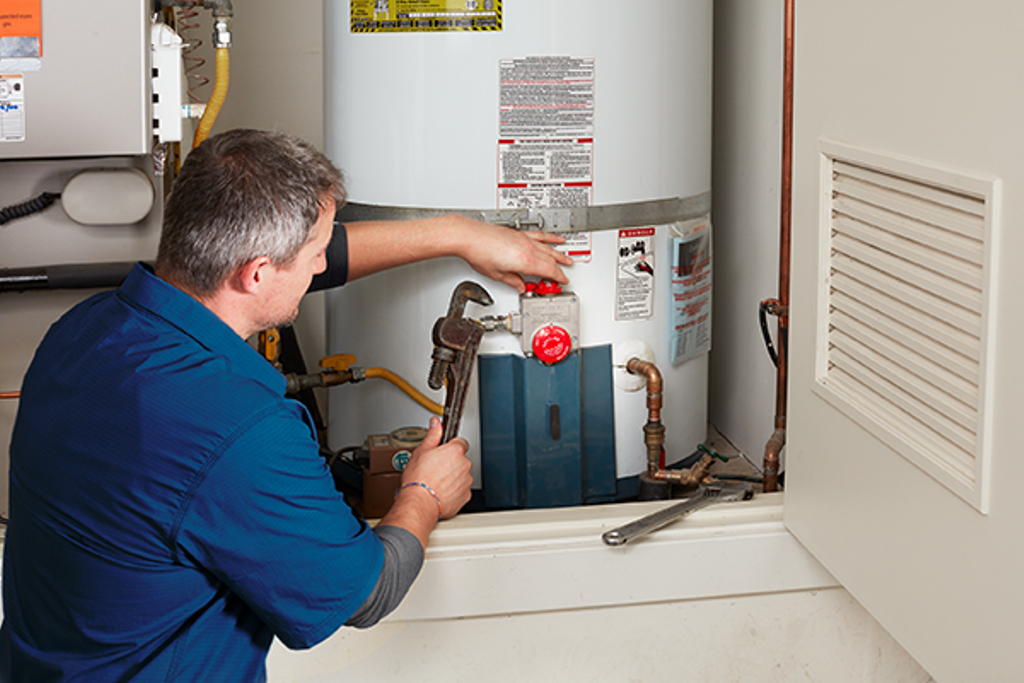
The main reason why you want to clean your home’s water heater every so often is to prevent sediment from building up in it. Over time, sediment will start to stir up in your water heater’s tank, and when it does, it can cause all kinds of complications.
Sediment in a water heater can do damage to some of the parts situated inside of it. It can also stop a water heater from doing its job in an efficient manner, thus causing your home’s energy bills to skyrocket.
And in some cases, the presence of too much sediment in a water heater can cause it to break down way sooner than it should. You may end up having to replace a water heater ahead of schedule as a result of something as simple as sediment.
By performing water heater maintenance, you can stop sediment from taking a toll on you. You can also give yourself an opportunity to inspect the other elements of your water heater so that you don’t have to worry about things like hot water expansion tank problems.
Shut Your Water Heater Off and Allow the Water in It to Cool Down
Now that you know why it’s so important for homeowners to learn how to clean water heaters and maintain them, let’s move into talking about how you should go about cleaning your home’s water heater.
To start, you’ll want to shut your water heater off. On electric water heaters, this will mean simply turn the power switch to the “off” position. On gas water heaters, it’ll mean turning the knob on the thermostat to “pilot.”
From there, you should step away from your water heater for about an hour or two to give the water inside it a chance to cool down. You should also shut off the cold water valve that’s connected to it so that it doesn’t start to refill right away once you begin draining it.
Hook Up a Hose to the Drain Valve on Your Water Heater
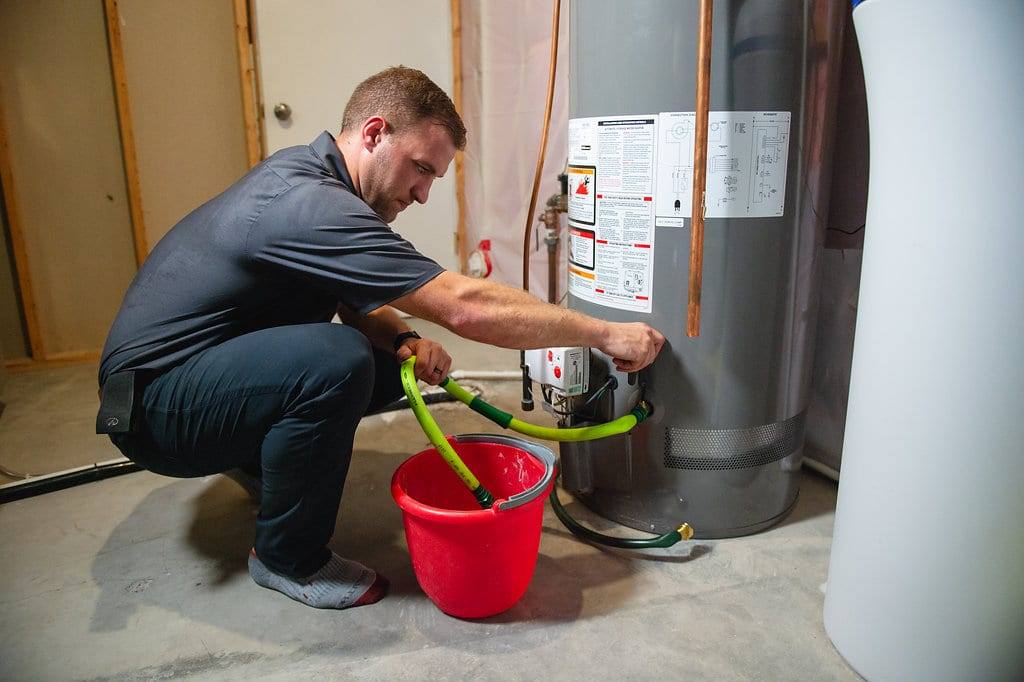
After your water heater has had some time to cool down, it’ll almost be time for you to drain it out and get it nice and clean. To do this, you’ll want to locate the drain valve on your water heater and hook up a drain or garden hose to it.
The drain valve for your water heater is situated down near the ground. It should be simple enough for you to screw a hose onto it as long as it hasn’t been damaged in any way while set up in your home.
Start Emptying Your Water Heater Into a Bucket or Drain
Once you have your hose connected to the drain valve on your water heater, you should take the other end of it and place it into a bucket or a drain. You should also make sure that the bucket or drain is going to be prepared to hold all the water from your tank.
Oftentimes, homeowners start draining a water heater and find that the drain they’re using to empty it out isn’t equipped to hold all the water they’re sending in its direction. This leads to them having to deal with a huge mess and makes cleaning a water heater more trouble than it’s worth.
Water heaters in homes typically hold anywhere from about 20 gallons of water at a time to more than 50 gallons of water. You should find out how much yours holds so that you’re ready to drain all the water from it in the right place.
When you’re confident that your bucket or drain is prepared for what’s coming, use a screwdriver to open up the drain valve on your water heater. Water and sediment from the water heater should start draining from it right away.
Turn On a Couple of the Faucets in Your Home
When you’re draining the hot water heater in your home, it’s not uncommon at all for vacuums to form within your plumbing pipes. These vacuums could potentially do some damage to your pipes if you’re not careful, which is why you want to make sure that they’re on your radar.
Fortunately, it’s simple enough to eliminate these vacuums and prevent them from causing problems for you. You should take a few seconds to turn on a couple of the faucets in your home while you drain your water heater to stop vacuums from wreaking havoc on your plumber system.
Turn the faucets to their “hot” settings and let them run the entire time your water heater is draining. Since you will have shut off your cold water valve, there isn’t much water that will come out of them. But by leaving them on, it’ll stop vacuums from forming in your plumbing pipes.
Let Your Water Heater Fill Back Up Again and Test It Out
After you’ve emptied out your water heater completely, it should be all cleaned out on the inside. It’ll be time to work backward so that you can get your water heater up and running like normal again.
These steps will need to be taken:
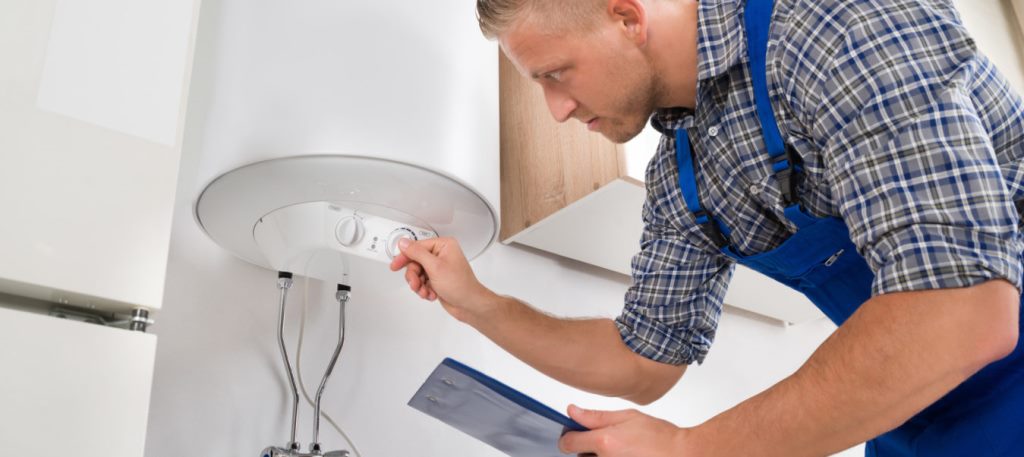
- Shut off the faucets that you had running in your home while your water heater draining
- Close the drain valve on your water heater
- Remove the hose from your water heater (you may want to take it outside, hook it up to a spigot, and run it for a few minutes later on to remove any lingering sediment from it)
- Turn your cold water valve back on and give your water heater a chance to refill
- Turn your water heater back on and give it about an hour to start heating your water up again
After about an hour has passed, you can go ahead and test out your water heater to make sure it’s working the way it should. Turn the hot water on in various parts of your home to check to see that your water heater is able to deliver hot water throughout your house.
Repeat This Process About Once or Twice Every Year to Keep Your Water Heater Clean
There is some debate over how often homeowners need to do water heater maintenance. But generally speaking, most experts recommend that people should drain their water heaters at least once every year to stop sediment from rearing its ugly head.
If you have a lot of hard water coming into your home, you might want to consider doing it even more often than that. You could very well benefit from having your water heater drained every six months in that case.
But whatever you do, you shouldn’t ignore the fact that you need to drain your water heater every now and then. Some homeowners don’t ever get around to cleaning their hot water heaters and many of them pay the price for it.
You could end up spending a small fortune to run your water heater if it’s filled with sediment. You could also be forced to replace it sooner than you thought you would have to if you don’t make water heater maintenance a top priority.
All Homeowners Should Know How to Clean Water Heaters
Cleaning your home’s hot water heater might not sound like the most exciting job in the world. But that doesn’t mean that you shouldn’t still do it regularly.
Now that you’ve taken the time to learn how to clean water heaters, you should know exactly what needs to be done while maintaining a water heater. It shouldn’t take you too long at all to get the job done.
Interested in finding out how to maintain other aspects of your home? Browse through the articles on our blog to get other home maintenance tips and tricks.
